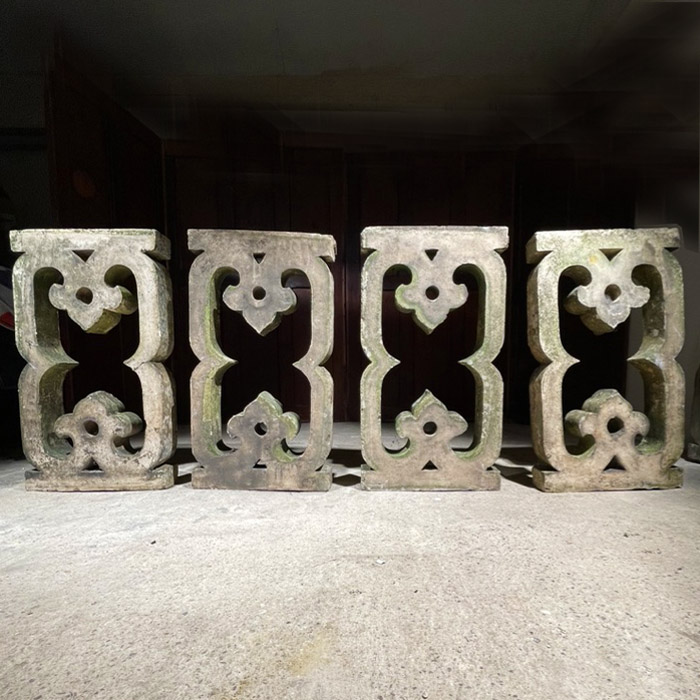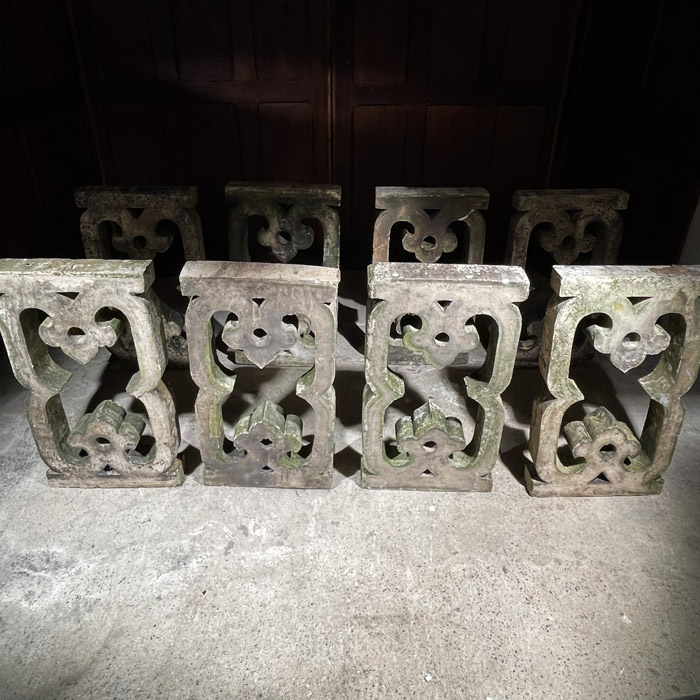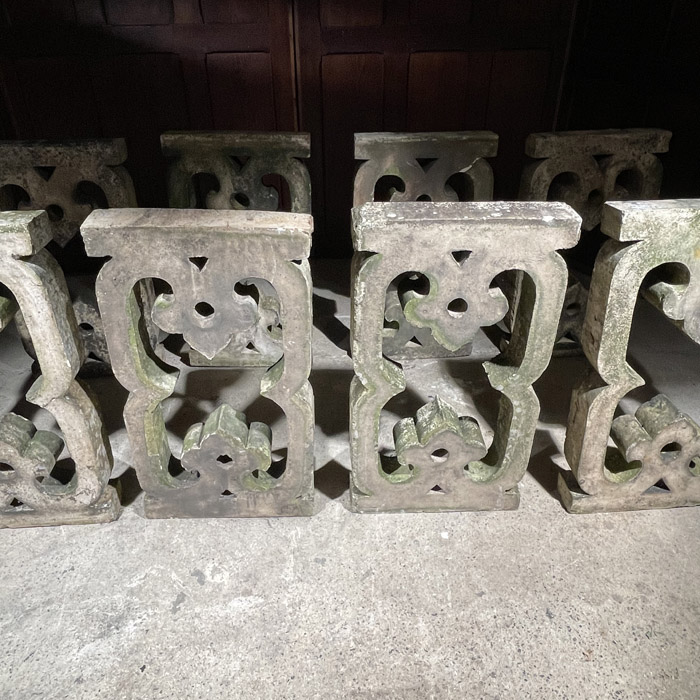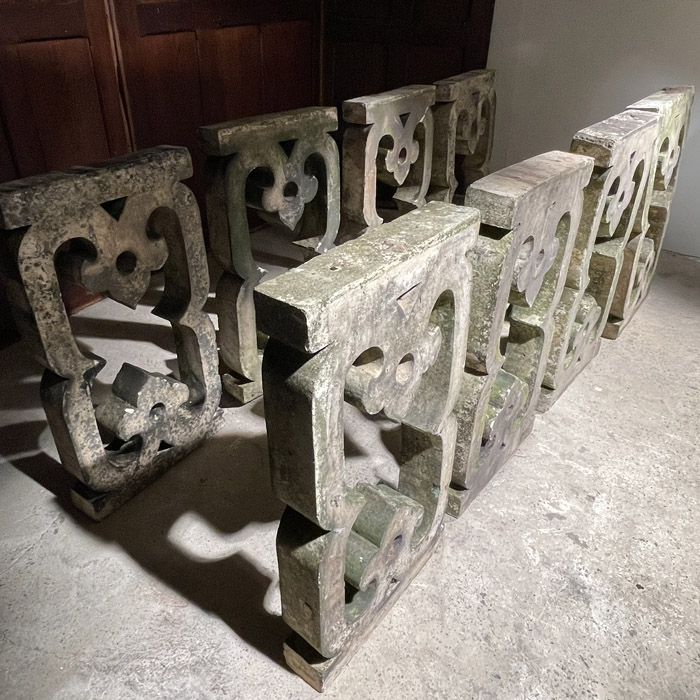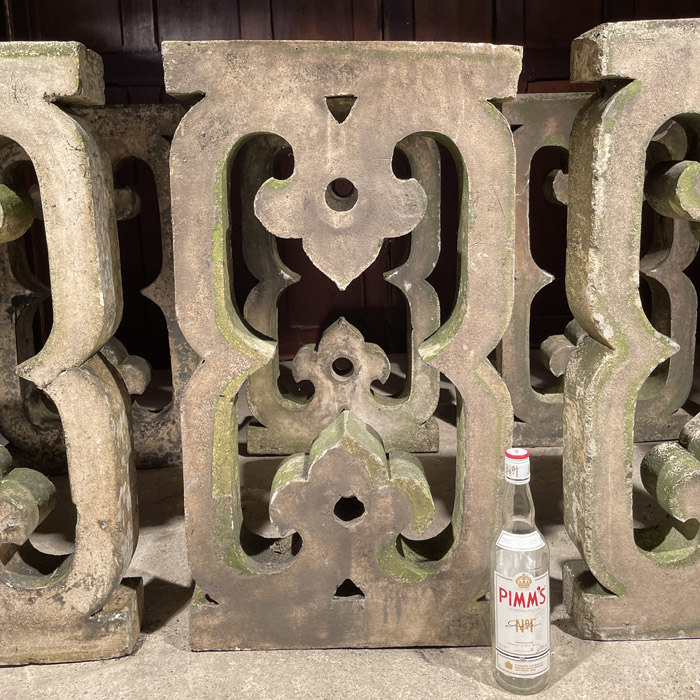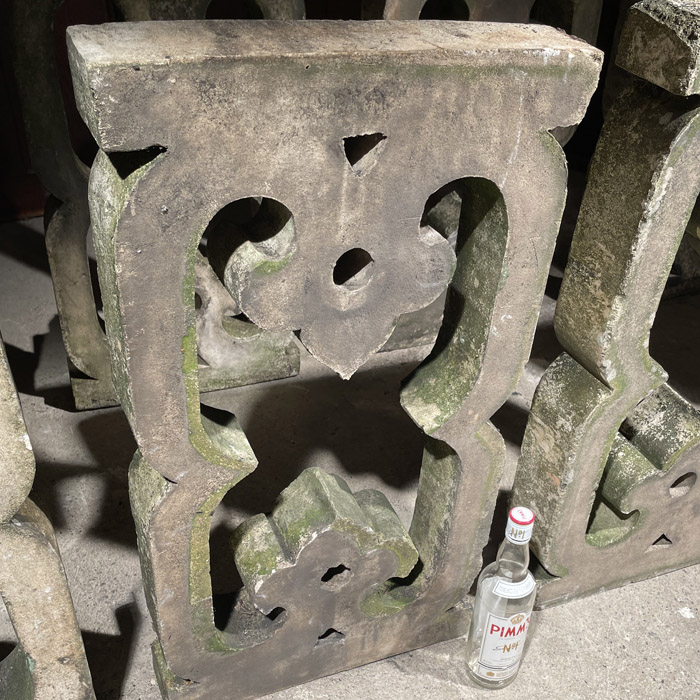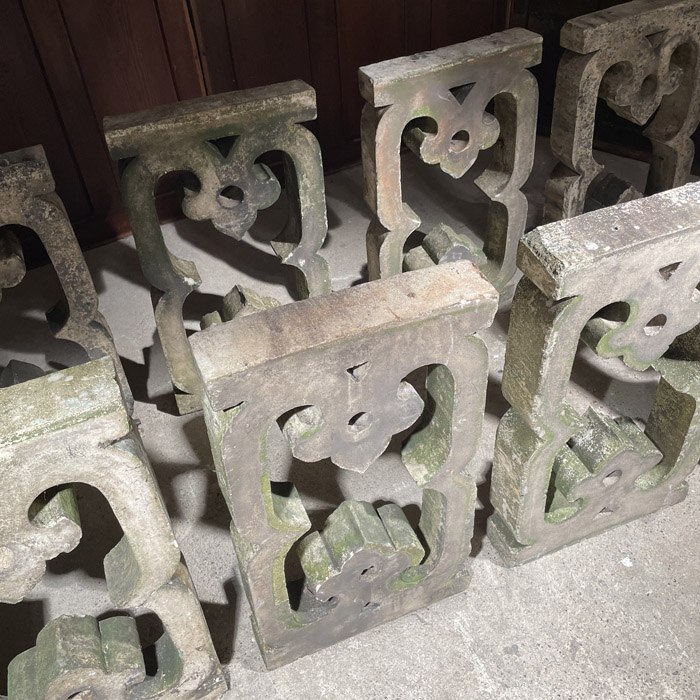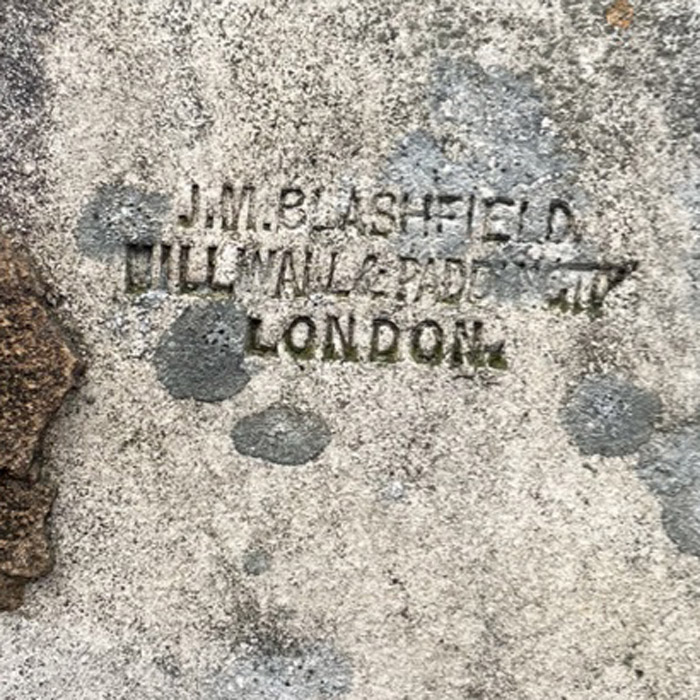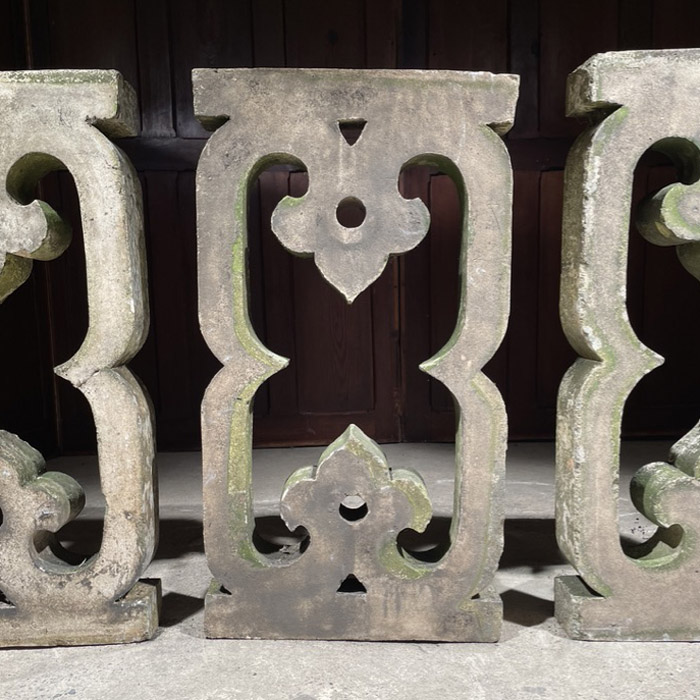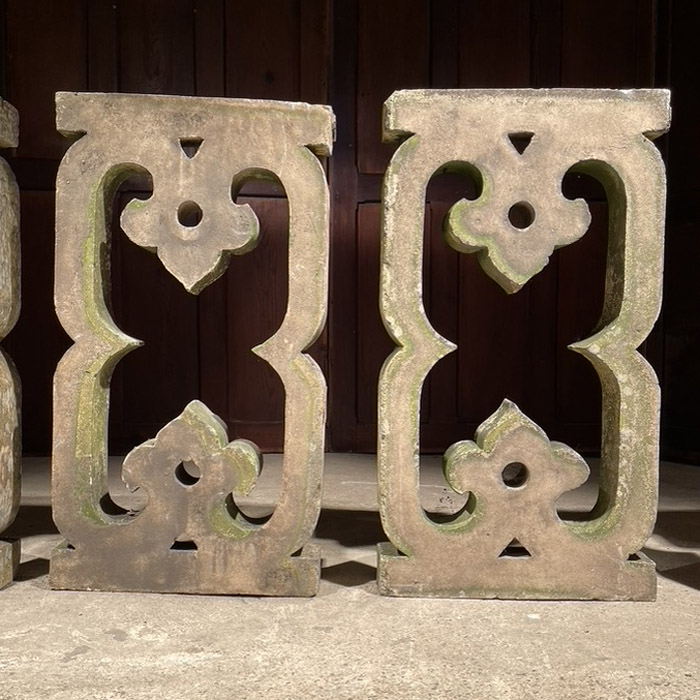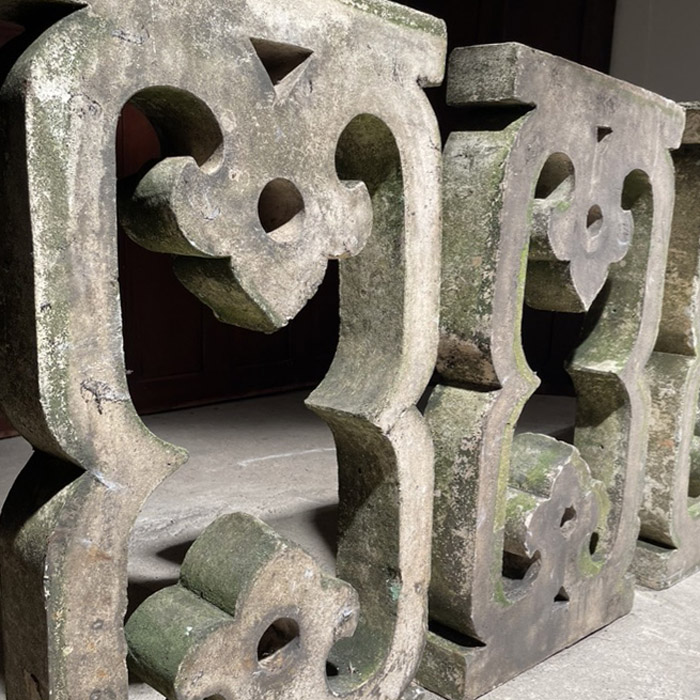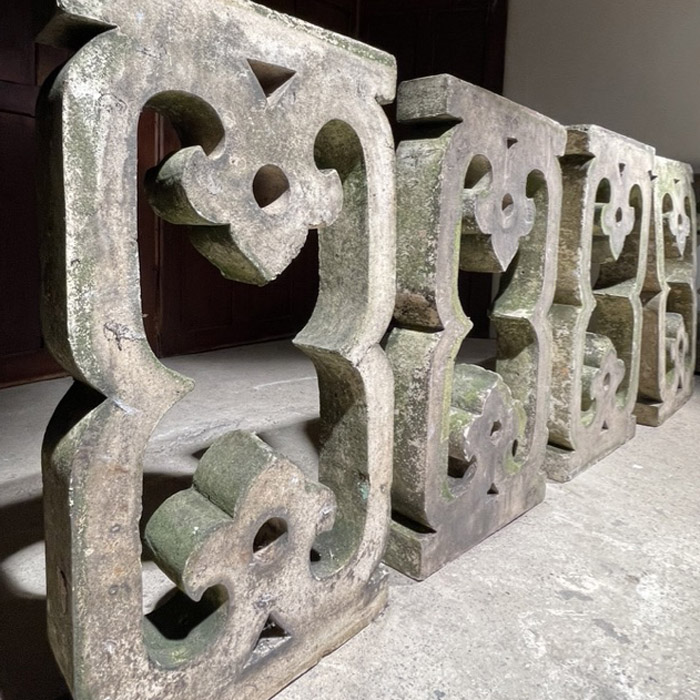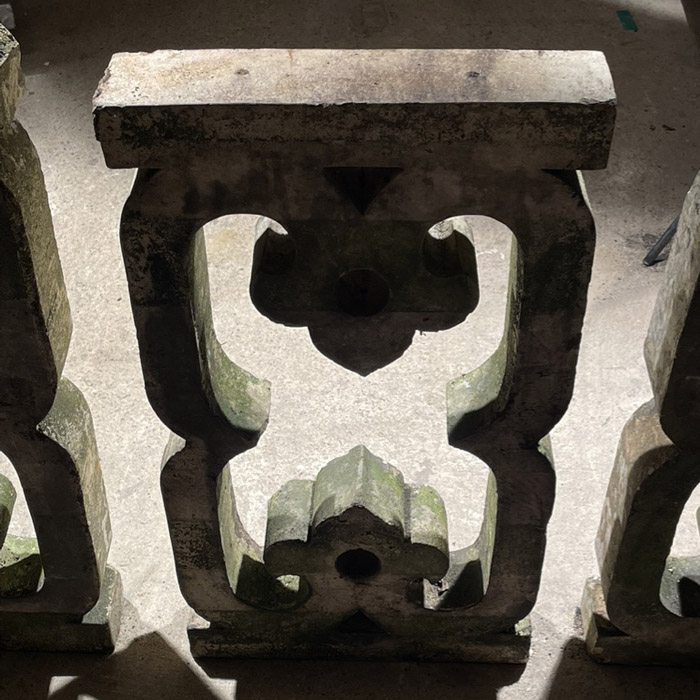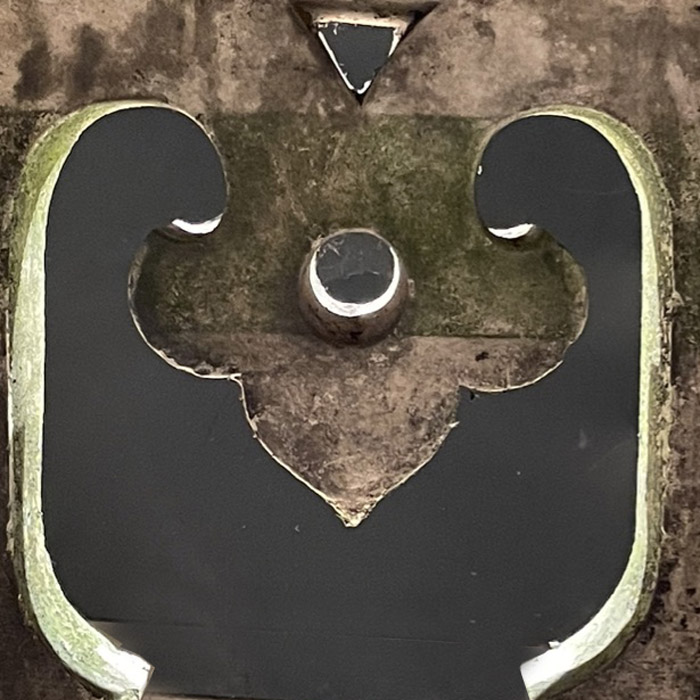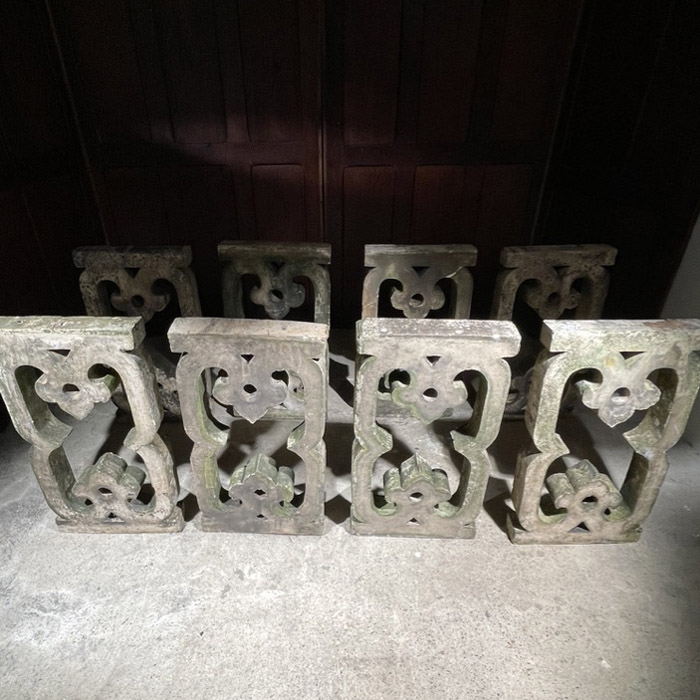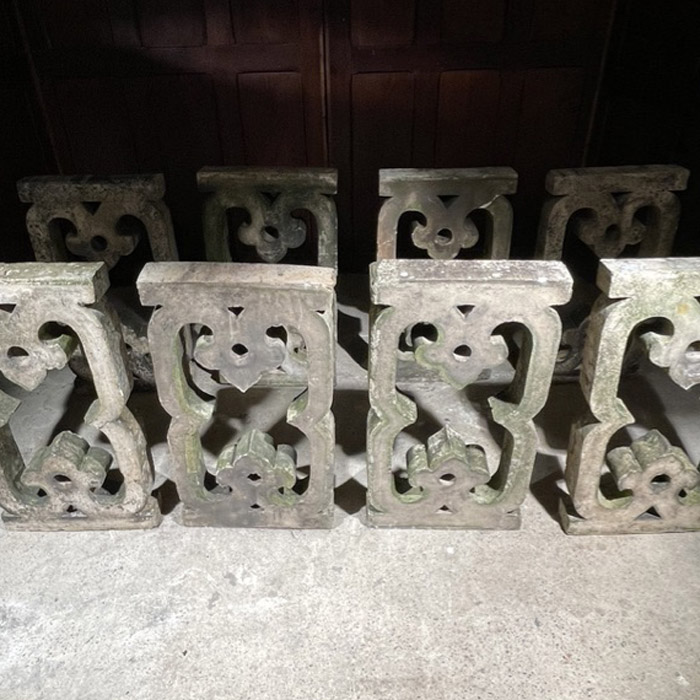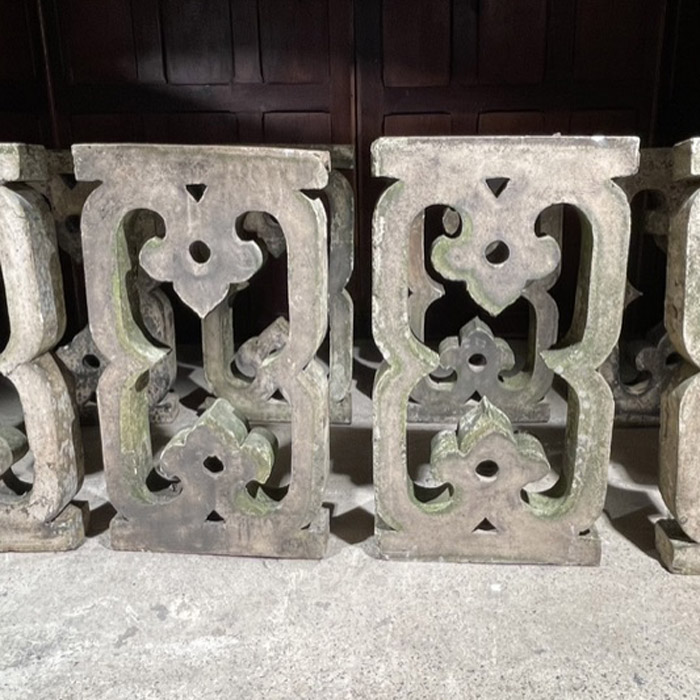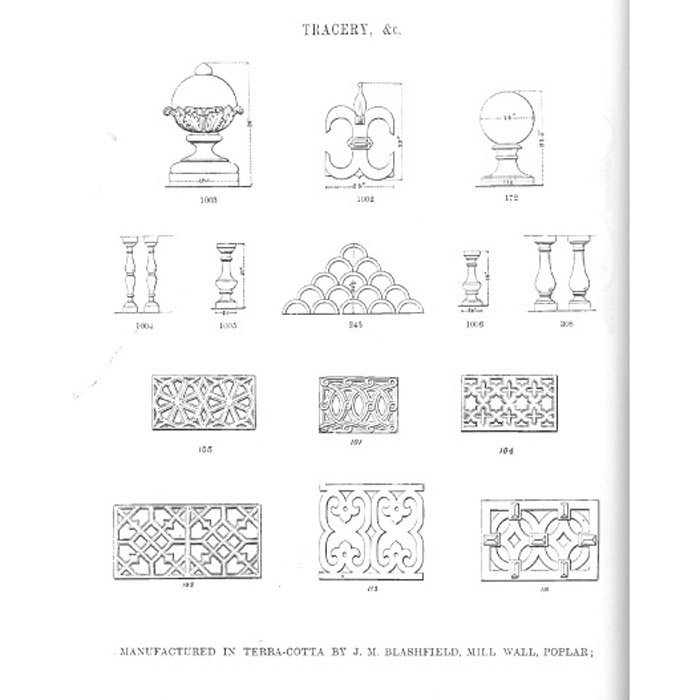No products in the basket.
Click and Collect – Please contact us to arrange collection or delivery of this item
A rare series of eight early Victorian stoneware bracket-consoles for a balustrade
c.1855, by J.M. Blashfield, bearing the maker's stamp "J.M.Blashfield, Millwall & Paddington, London"
each console comprising a pierced panel of strapwork, with mirrored foliate forms,
£5,600 the eight
These elegant stoneware panels were made in the 1850’s prior to Blashfield’s move to Stamford in Lincolnshire. They are of hollow construction, when moved the blow-holes still give out soot from the interior. The series of eight were found in South Wales and the stamp appears a few times. The casts are by no means perfect – they evidently were tricky in the kiln as some have sagged and are coved – but it seems they were supplied like that. Together they form a decorative terrace balustrade or parapet screen. Paired they could perhaps be used for console tables. The intervals can be changed according to preference.
The casting is listed with an illustration in Blashfield’s later catalogue – so was still being produced to order for some years.
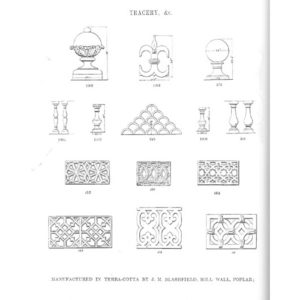
Originally an expert in Mosaic floors and terracotta John Marriot Blashfield (1811-82) started producing garden wares and more sculptural work after The Great Exhibition in 1851. Blashfield had sizable workshops in Millwall but moved them to Stamford in Lincolnshire in 1859 to take advantage of the clay of the area. Re-naming the business “The Stamford Terracotta Company” he continued the run of prestigious projects he had enjoyed in London but ceased production in the early 1870’s as Blashfield’s fortunes were continuously hampered by export problems. The Stamford works were sold in 1874.
Blashfield stoneware is naturally compared to the earlier Coadestone – it has similar properties and colour. It has been ventured that Blashfield may have acquired some of the the Coade moulds when they were distributed in a series of sales – but Blashfield was too young to have directly bought some and there is no evidence that he produced designs that were from Eleanor Coade’s workshops. He was doubtless inspired by Coade though.
These architectural castings are from early in his career.

